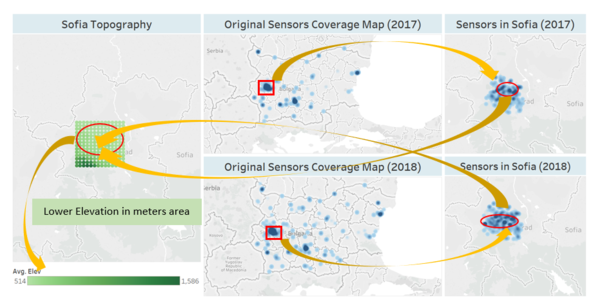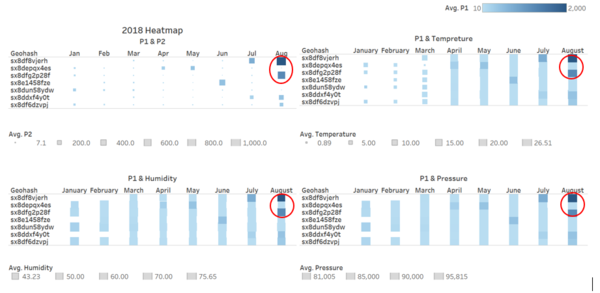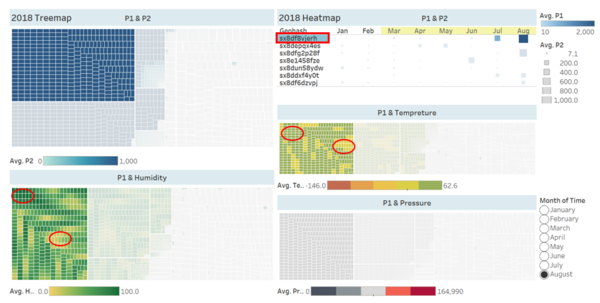Assignment ZUOANNA Task 3
Contents
Reveal the relationships between the factors mentioned above and the air quality measure detected in Task 1 and Task 2
Insights from Task1
Overview
From Task 1, we detect some characteristics on the air pollution by drawing time series lines over the five years. For proper analysis, we group the stations based on the different time period they recorded.
From 2013 to 2016, we found that the concentration on P10 was extremely high on January and December every year, hence, we named it “U pattern”.
In 2017, the data is only provided over two months, November and December, the days which are in more serious air condition were mainly concentrated on 8th, 11th to 13th, 25th to 27th and 31st which is the most serious polluted day in December.
Insights & Dashboard Design
Local energy sources
As reported in the survey for air pollution, it is known that commercial, institutional and household fuel combustion dominates emissions of primary PM10 and PM 2.5. The second largest source of emissions of primary PM10 is industry, followed by transport.
By analysing the air pollution patterns, the most possible reasons that lead to higher concentration on P10 should be household burning of fossil fuels or biomass, and industry. Winters are relatively cold and snowy in Sofia, so the temperature In January and December turn to be very low and people need more electricity which is generated by fossil fuels. By researching the information about Sofia City, we know that Bulgarian directive is set on manufacturing refuse-derived fuel (RDF) for use in cement kilns to produce heat and electricity, in addition to cement clinker. Currently, three cement plants in Bulgaria – Devnya Cement, Zlatna Panega Cement, and Holcim – use RDF in their production cycle, effectively contributing towards Bulgaria’s existing air quality issue. Just about a third of Sofia’s waste goes to recycling and composting, while the remainder is turned into RDF for further incineration or landfilled. The plan to build an incinerator in Sofia means adding yet another source of particulate matter, mercury and other hazardous pollutants to the already hard-to-breathe air in the city. What’s more, the burning of imported waste has grabbed national headlines in Bulgaria, with inhabitants of Devnya claiming that soot from burnt garbage is spreading across the district.


